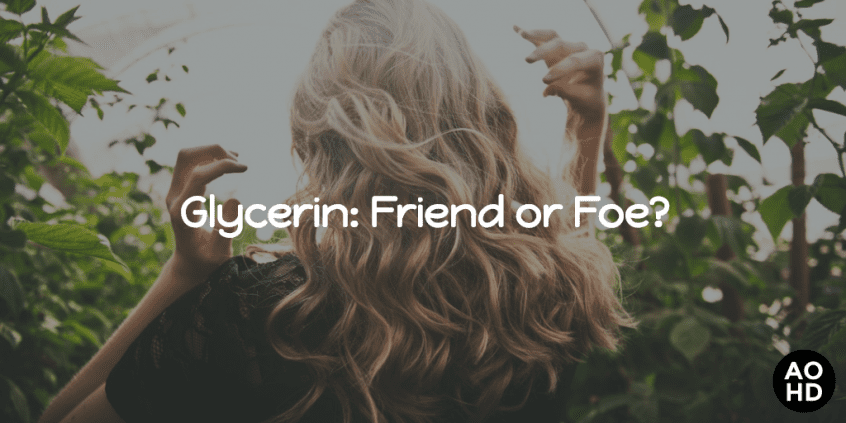What is glycerin anyway? Also known as glycerol or glycerine, this ingredient is a colorless liquid that can be found in all natural fats (both plant and animal). It is found in our skin and can be manufactured synthetically. Acting as a natural humectant, glycerin attracts moisture to whatever surface it’s applied to. This super versatile ingredient has quite the history behind it. It’s used in antifreeze, in the film industry for special effects, and to heal wounds because of its anti-inflammatory and anti-irritant properties. It has been used for years in cosmetics and studies have shown the ability to aid in the repair and regeneration of skin cells. Most commonly known perhaps, is the use of glycerin in skin care and hair care products which has been a subject up for debate recently.
Glycerin: The Good
Looking to hydrate your hair? Define your waves or curls? Glycerin could be exactly what the Doctor ordered. Derived from natural plant seed oil sources such as coconut, palm or soy, glycerin is pure and nontoxic. It moisturizes and is known to prevent breakage, especially on hair that isn’t chemically treated. Since it helps draw moisture from the air onto your hair and is easily soluble in water, glycerin can serve as a great deep conditioner. Especially when mixed with commercial conditioners, added to homemade hair products, other natural oils or even water.
Drawing this moisture from the air can make glycerin a great addition to your skincare routine when used with caution. Because it can help to reduce breakage, it can help hair to grow longer faster, and remain healthy. Glycerin can help to eradicate itchy scalp, especially during colder months. Regular application can help eliminate dandruff with a soothing cooling effect on the scalp. Nothing can “repair” split ends, but mixing a few drops of essential oils with glycerin can help to strengthen hair. This leads to a decrease in split end formation.
Glycerin: The Bad
While not necessarily a “con”, one should be cautious and read labels when shopping for glycerin. While varieties derived from animal fats are definitely natural they, and petroleum blends actually run the risk of severely drying hair out causing brittle ends and breakage. If that isn’t scary enough, many products with “glycerin” as an ingredient are made with a synthetic form which is typically produced from epichlorohydrin. This synthetic glycerin often delivers similar benefits to its natural counterparts but comes with major risks. Epichlorohydrin is a toxic chemical, classified as a possible carcinogen. It’s best to keep an eye out for brands that say “USP Grade”, “non-GMO”, or “Kosher certified” on the labels.
Glycerin’s high solubility in water makes it a great candidate for leave-in hair products, but unfortunately, most rinse-out conditioners that boast it as an active ingredient may not achieve the desired effect. Speaking of leave-in conditioners, glycerin will work wonders adding moisture and defining curls as long as the weather is moderate. Because of its humectant nature, it will draw moisture from wherever it is most abundant, meaning if it is humid out it will draw excess moisture from the air onto hair making it even frizzier than without it.
Conversely, in really dry conditions, glycerin will actually draw moisture from your hair. This leaves your hair drier than it would have been without it. This property makes it difficult to get consistent results with inconsistent weather conditions. If your hair was recently colored, it’s not recommended to use this substance during the first wash.
Bottom line: don’t use glycerin on colored hair, read all your labels, and check the weather!
Share this Post

